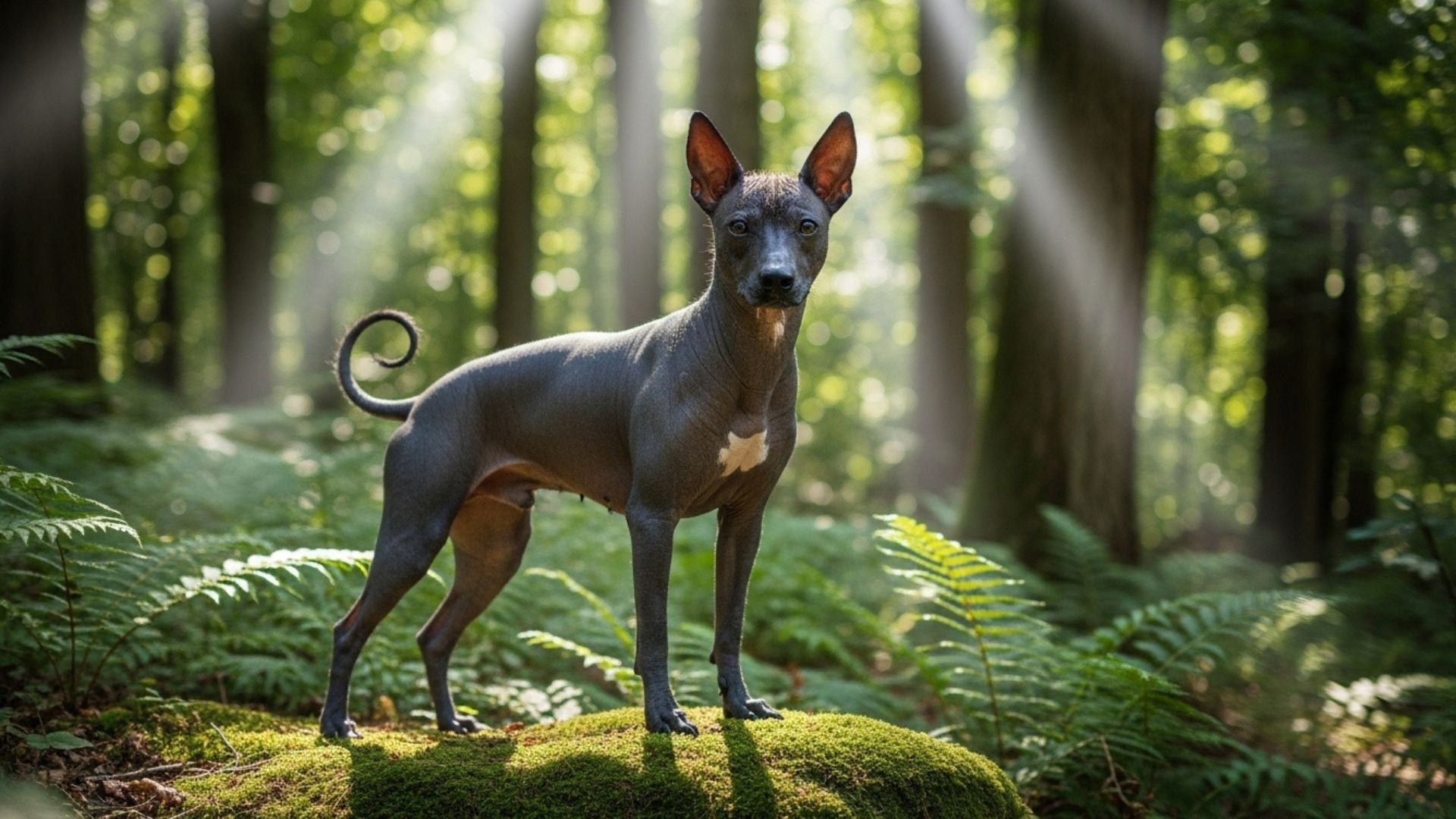Did you know that certain dog breeds have notably shorter lifespans than others? According to a study, small, long-nosed dog breeds tend to live longer, with a median lifespan of 13.3 years, while flat-faced breeds average around 11.2 years.
Interestingly, larger dog breeds often have shorter lifespans. This shorter lifespan doesn’t diminish the joy these dogs bring to their owners. Their unique traits and personalities make every moment spent with them precious.
In this article, we’ll explore seven rare dog breeds known for their brief lifespans and distinctive characteristics. Understanding these rare breeds can help potential owners make informed decisions and appreciate the special bond they share with these dogs.
Join us as we delve into the world of these extraordinary canines, celebrating their uniqueness and the joy they bring to our lives.
Rare Dog Breeds with Limited Lifecycles
1. Spinone Italiano
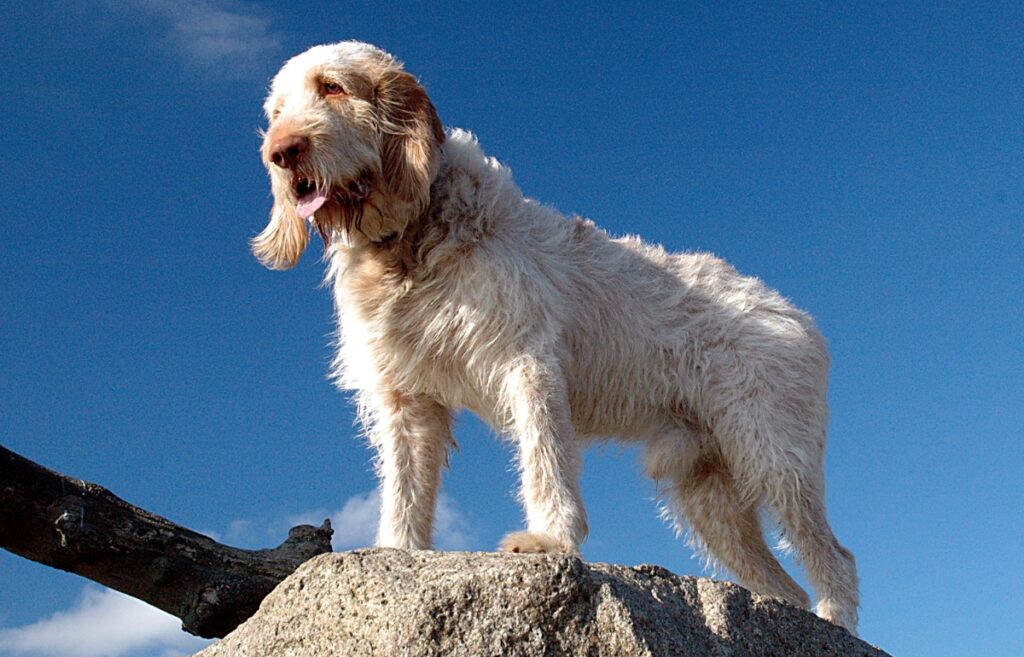
The Spinone Italiano typically lives around 10-12 years, with a lifespan shortened mainly due to genetic predispositions to joint issues like hip dysplasia.
These conditions can significantly impact their mobility and overall quality of life if not addressed early. However, with proper care, this breed can still enjoy a relatively active lifestyle despite these challenges.
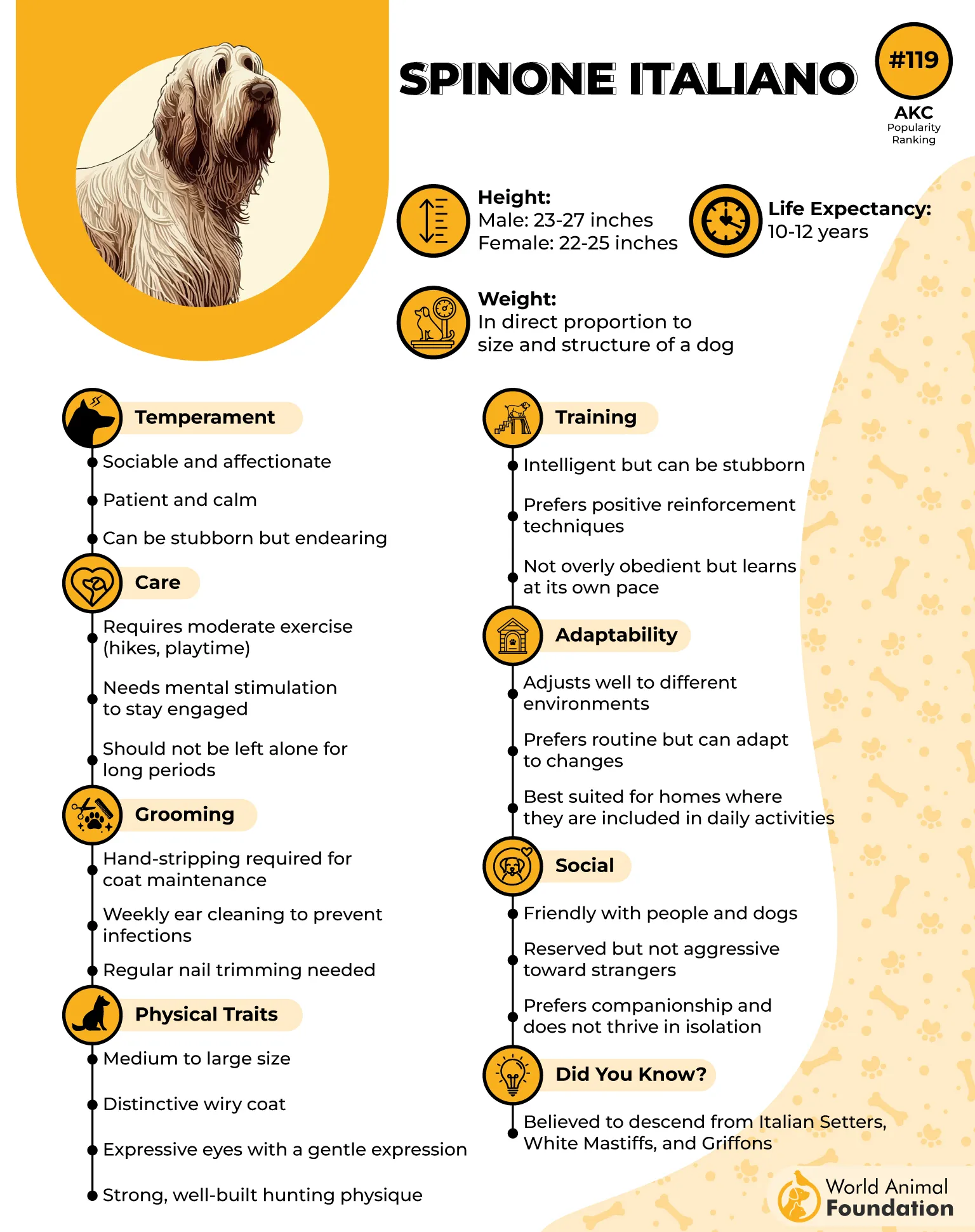
AKC adds that Spinone Italianos are friendly, loyal, and loving dogs. They have a distinctive, wiry coat that requires regular grooming and care. Their gentle temperament makes them excellent family companions, but they can develop skin allergies, ear infections, and sometimes vision problems.
Tips for keeping them healthy and prolonging their life:
Regular exercise to maintain weight and joint health.
Clean their ears frequently to prevent infections.
A nutritious diet rich in omega-3 fatty acids is essential for healthy skin and coat.
Regular vet checkups to monitor joint and eye health.
They thrive in active homes, especially those with outdoor access for daily walks and play. Being a larger breed, they require sufficient space and consistent veterinary care to manage potential genetic conditions.
2. Neapolitan Mastiff
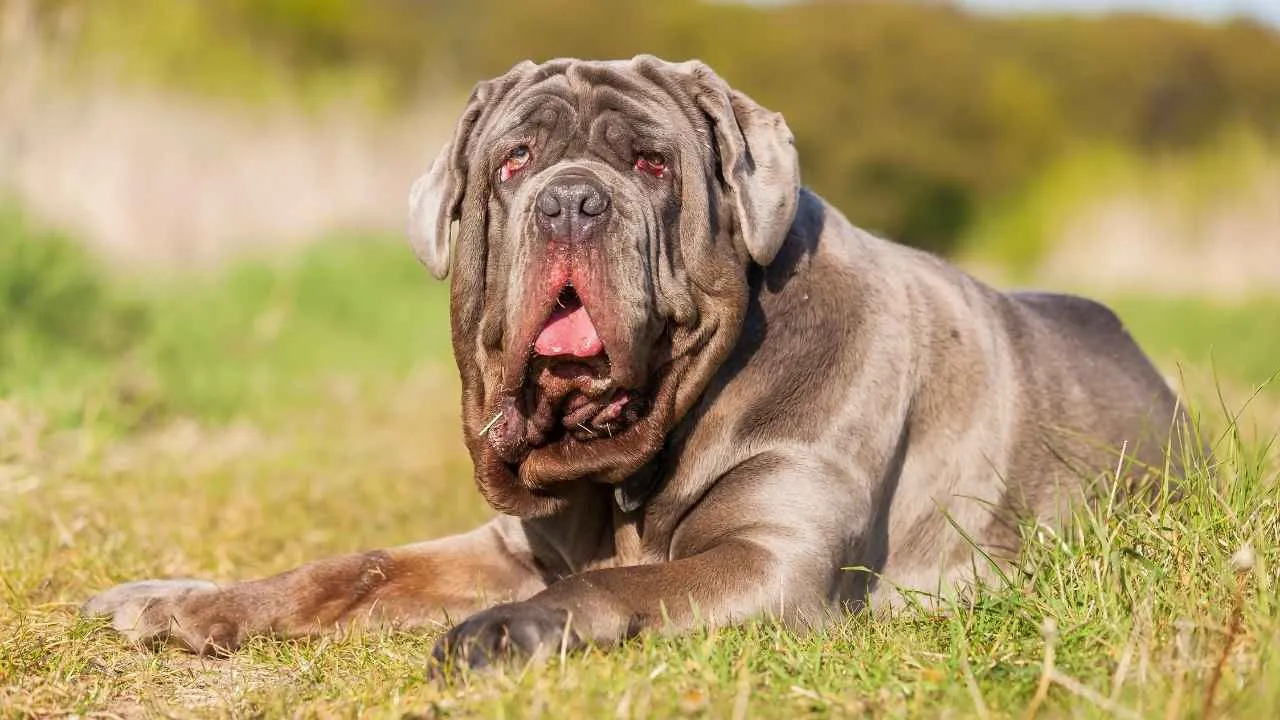
The Neapolitan Mastiff has a relatively short lifespan of 7-9 years, which is common for larger breeds. Due to their size, they are prone to several health conditions, including heart disease and joint issues like hip dysplasia. These health concerns often contribute to a reduced lifespan if not closely monitored.
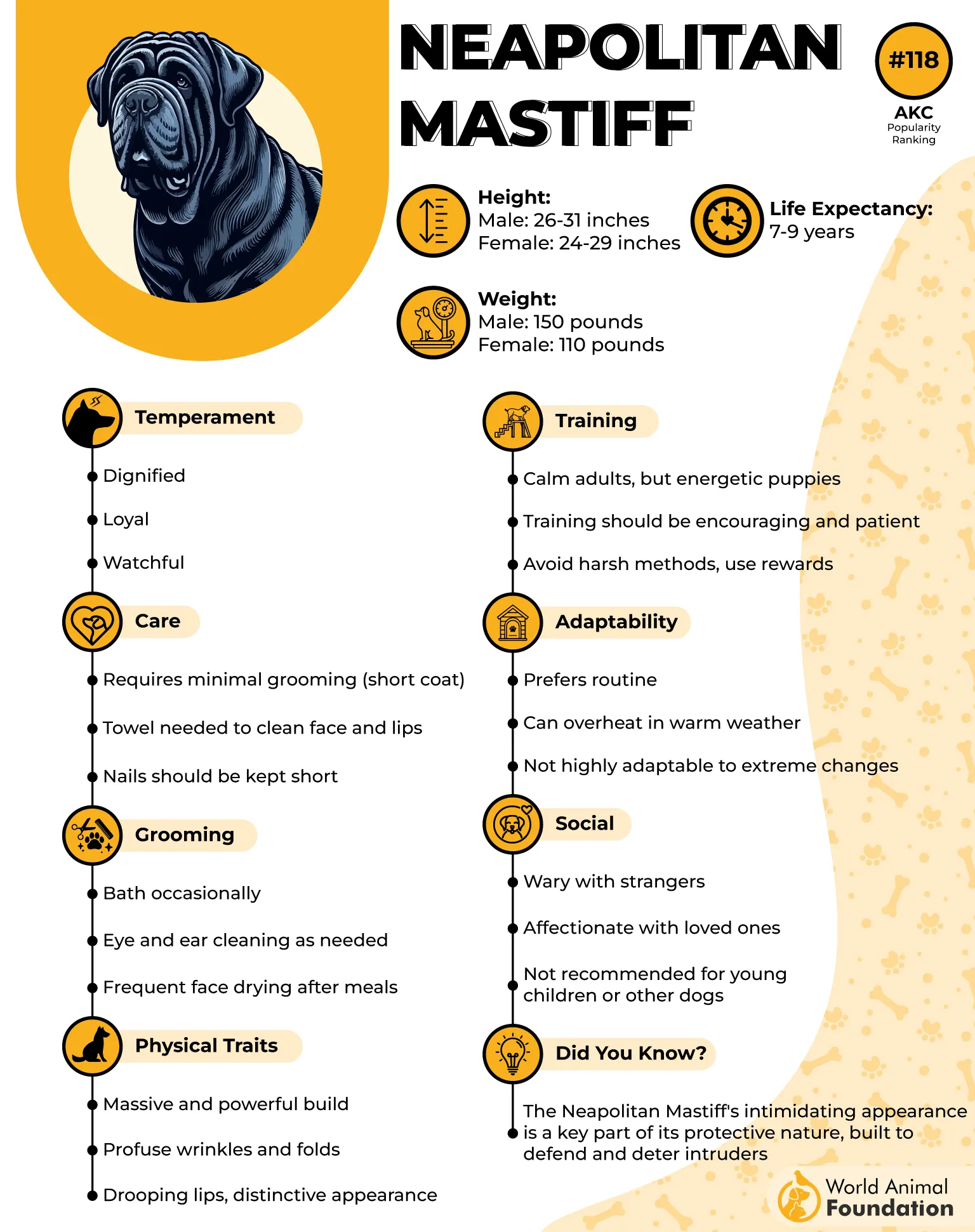
Purina explains that this breed is known for its massive, imposing frame and distinctive loose, wrinkled skin.
Neapolitan Mastiffs are gentle giants with a calm demeanor, but they do face challenges such as respiratory issues due to their large chest and hip dysplasia. They are also susceptible to entropion, a condition where the eyelid turns inward, which can affect their vision.
Tips for keeping them healthy and prolonging their life:
Regular vet visits to monitor heart and joint health.
Maintain a healthy weight to reduce stress on joints.
Consider joint supplements to support hip and elbow health.
Proper hydration and temperature control to avoid overheating.
Ideal for experienced owners who can handle their size and strength, the Neapolitan Mastiff thrives in homes where they can get plenty of attention and proper care, especially for their health concerns.
3. Belgian Laekenois
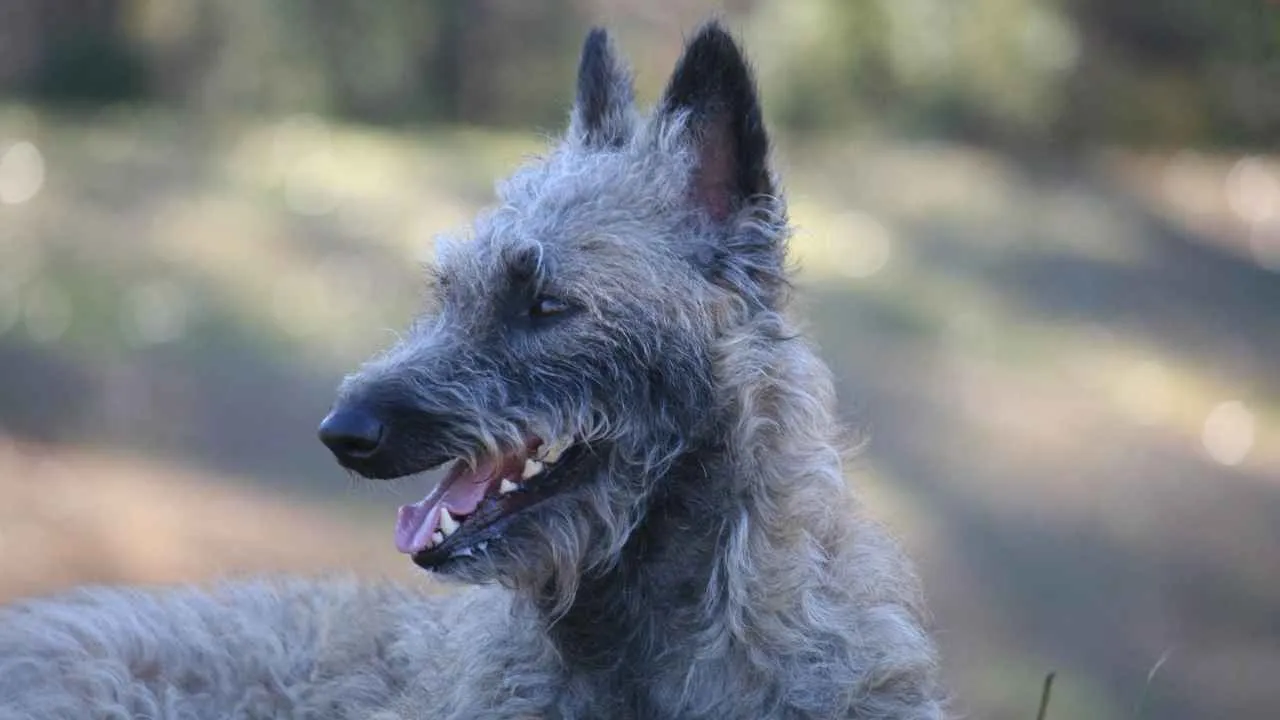
The Belgian Laekenois typically lives around 10-12 years, but like many active breeds, they are susceptible to health issues like hip dysplasia and epilepsy, which can affect their overall longevity.
While these conditions are manageable with the right care, they can lead to a shorter lifespan if not addressed properly.
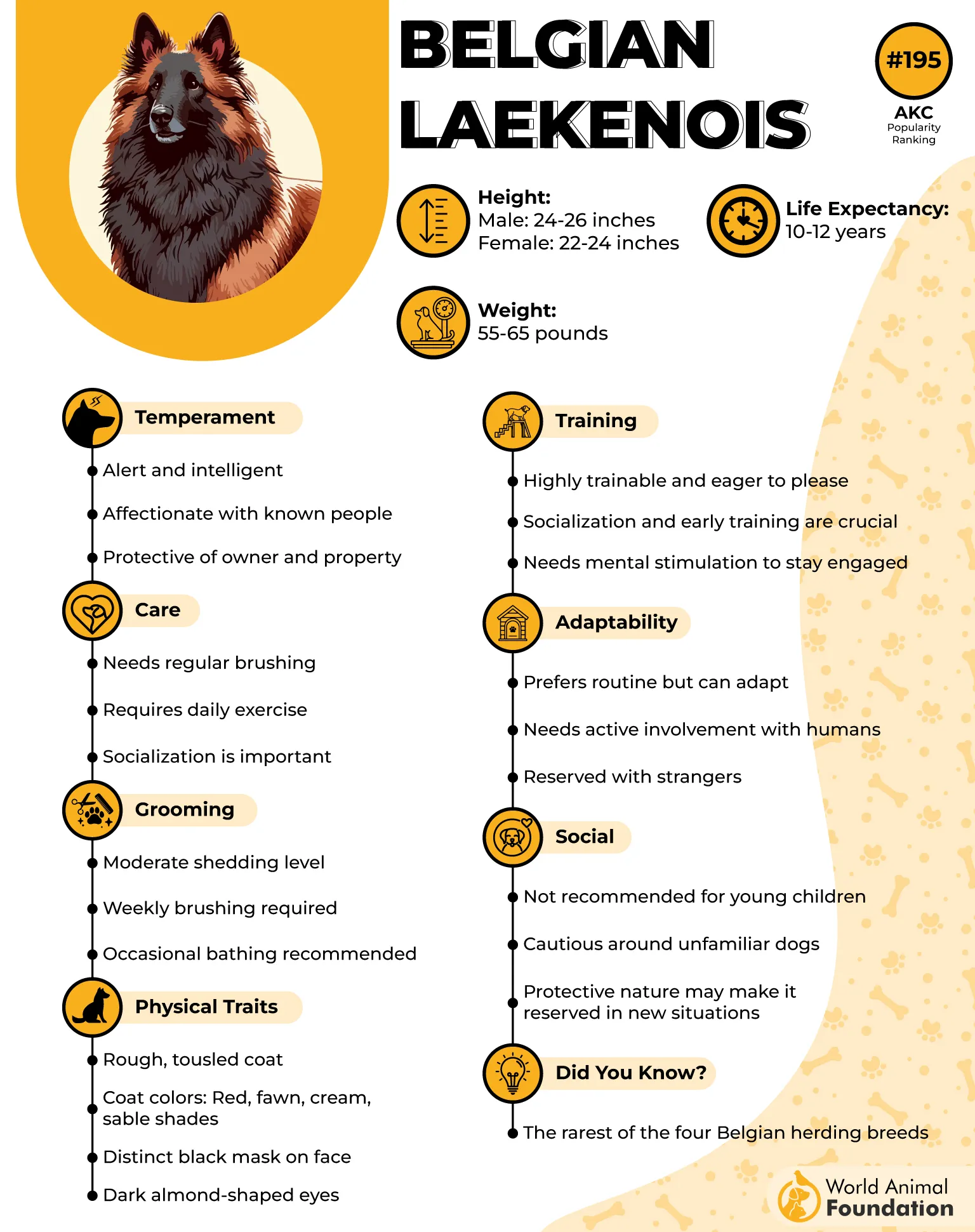
This breed is known for its high intelligence, alertness, and protective instincts. The Belgian Laekenois has a wiry, protective coat that needs regular maintenance.
They are generally healthy, but their predisposition to hip dysplasia, epilepsy, and autoimmune disorders can cause health complications over time.
Tips for keeping them healthy and prolonging their life:
Keep them mentally and physically stimulated to avoid boredom.
Monitor for signs of hip dysplasia and provide joint supplements.
A nutritious, balanced diet to support immune health.
Annual vet visits to address any genetic concerns.
The Belgian Laekenois thrives in homes with active owners who enjoy outdoor activities. This breed requires a lot of stimulation and exercise, so potential owners should be prepared to give them the attention and care they need to stay healthy.
4. Presa Canario
Presa Canarios have a lifespan of 9-11 years, which is relatively short for a breed of their size. Their health can be affected by conditions such as heart disease, hip dysplasia, and musculoskeletal issues, which are common in large breeds and can limit their quality of life if not properly managed.
PetMD claims that known for their strength and protective nature, Presa Canarios are muscular and confident dogs.
However, their size comes with significant health concerns, including a higher likelihood of heart problems like dilated cardiomyopathy. They are also prone to joint issues, especially hip dysplasia, which can be exacerbated by weight gain.
Tips for keeping them healthy and prolonging their life:
Consistent exercise to prevent obesity and maintain a healthy weight.
Regular vet checkups to monitor heart and joint health.
Joint support supplements to keep them mobile.
A healthy diet to support muscle and heart health.
Presa Canarios do well in homes with experienced dog owners who understand the demands of a large, protective breed. They prefer spacious environments with room to roam, and their loyal nature makes them great guard dogs, provided they are well-socialized from an early age.
5. American English Coonhound
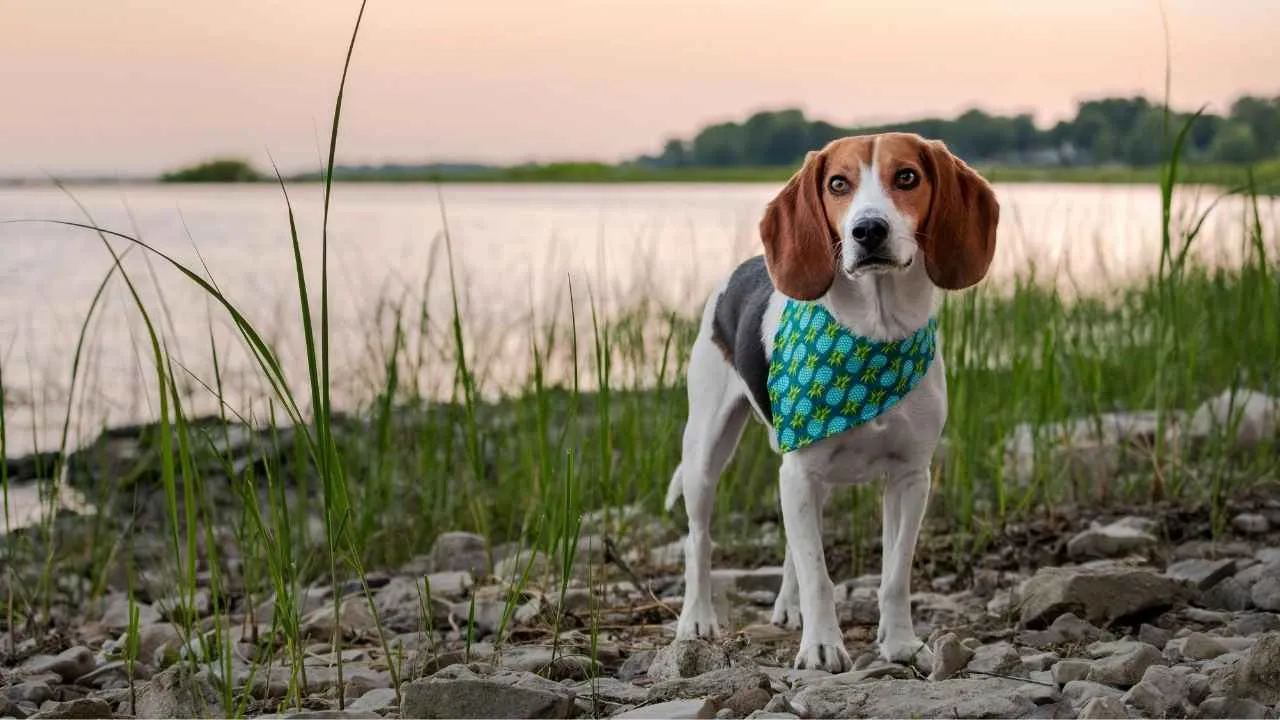
The American English Coonhound has a lifespan of 10-12 years, which can be shorter due to their active lifestyle and the physical stress of constant movement. Being an active breed, they are prone to joint issues like hip dysplasia, which can reduce their lifespan if not properly managed.
This breed is energetic, friendly, and great for hunting, with a muscular build and long ears that give them a distinctive look. Although they are generally healthy, they are prone to conditions like hip dysplasia and ear infections, which require consistent care and attention, according to WebMD.
Tips for keeping them healthy and prolonging their life:
Engage in daily exercise to burn off their high energy.
Clean their ears frequently to prevent infections.
Feed a high-quality diet to support joint health and energy.
Annual vet visits to monitor for joint and ear health.
The American English Coonhound is ideal for active families who enjoy outdoor activities. This breed requires space to roam and consistent care to ensure their long-term health and happiness.
6. Leonberger
Leonbergers typically live 7-9 years, which is relatively short for a dog of their size. They are prone to health conditions such as heart disease, cancer, and bloat, which are common in large breeds and can significantly shorten their lifespan if not monitored closely.
This breed is known for its gentle nature and striking appearance, with a thick double coat and a massive build.
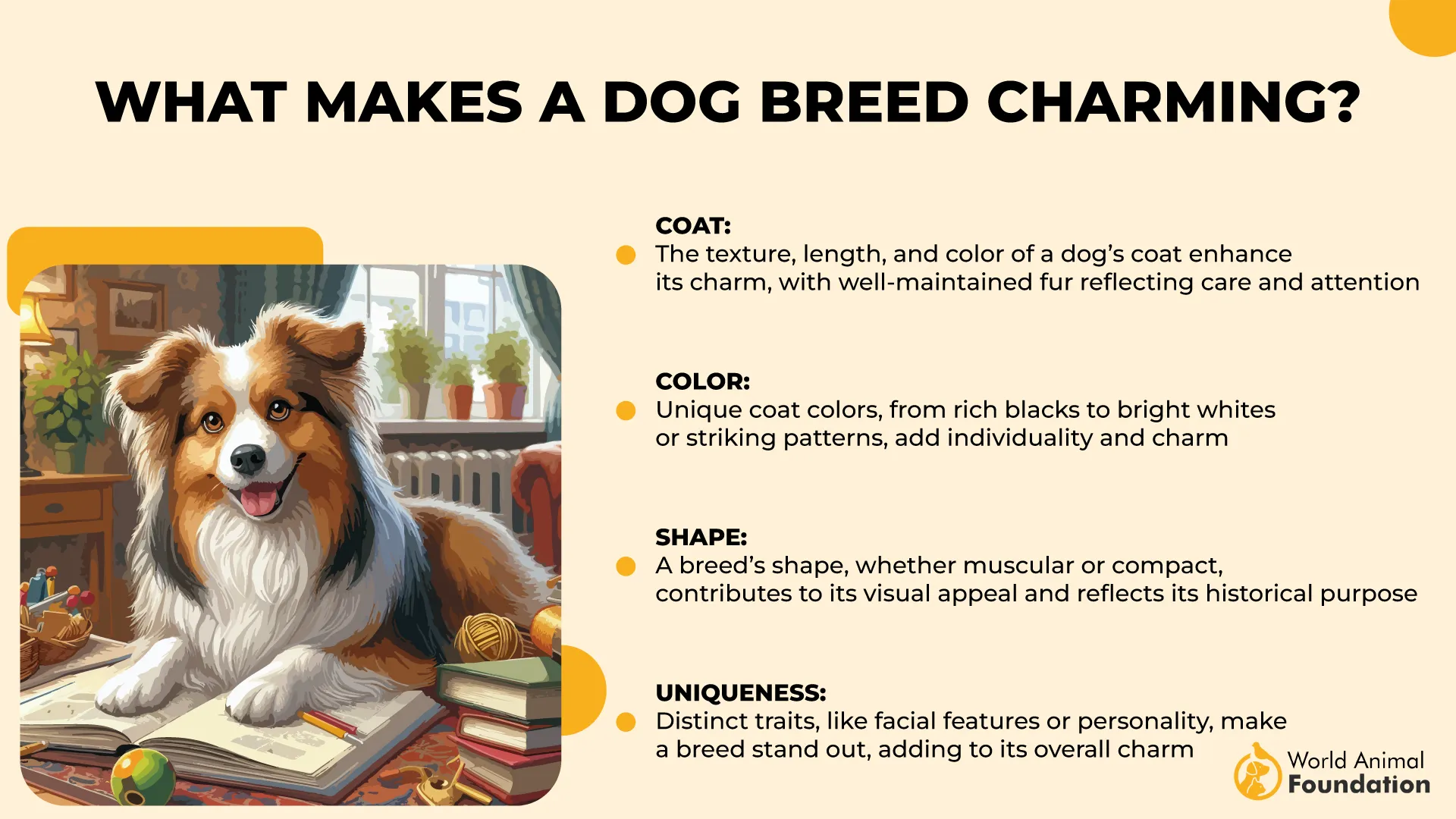
Despite their friendly demeanor, they are susceptible to genetic conditions like hip dysplasia, heart problems, and bloat, which can be life-threatening if not addressed in time.
Tips for keeping them healthy and prolonging their life:
Maintain a healthy weight to reduce strain on joints and the heart.
Provide low-impact exercise to keep them fit and strong.
Prevent bloat by feeding smaller meals more frequently.
Regular checkups to monitor for heart disease or cancer.
Leonbergers are best suited for owners with ample space who can commit to their exercise and health needs. Proper care and routine vet visits will help extend their lifespan despite the challenges of owning a giant breed.
7. Komondor
The Komondor lives an average of 10-12 years, a shorter lifespan for a large breed. While they are generally healthy, they are prone to conditions such as hip dysplasia and cataracts, both of which can limit their mobility and quality of life if not properly managed.
This breed is known for its unique corded coat, which provides a striking appearance but requires regular maintenance.
Komondors are protective, independent, and strong, making them excellent guardians, but their size and strength come with health challenges such as joint issues and vision problems.
Tips for keeping them healthy and prolonging their life:
Regular grooming to maintain coat health and skin condition.
Provide joint supplements to prevent hip dysplasia.
Keep their weight in check to avoid added strain on joints.
Annual eye exams to detect cataracts or other vision problems early.
Komondors thrive in homes with experienced dog owners who can handle their grooming needs and large size. They require a secure environment and regular vet visits to manage potential health issues and ensure a long, happy life.
FAQs
1. Are rare, short-lived breeds harder to care for than other dogs?
While rare, short-lived breeds can present unique care challenges due to their predisposition to specific health issues, they aren’t necessarily harder to care for. Proper attention to their health needs, such as joint care, regular vet checkups, and a suitable diet, can ensure a good quality of life.
2. Can proper care extend the lifespan of these rare breeds?
Yes, with proper care, such as regular exercise, a balanced diet, and early intervention for health issues, the lifespan of these rare breeds can be extended. Consistent veterinary visits to monitor their health are also key in managing any genetic conditions that may shorten their life expectancy.
3. Which rare short-lived breed is most affectionate toward families?
The Spinone Italiano is one of the most affectionate breeds toward families. Known for its gentle and loyal nature, this breed thrives in family environments and forms strong, loving bonds with its human companions.
Conclusion
In this blog, we’ve covered seven rare dog breeds with limited lifecycles, showcasing their unique traits and health considerations. Breeds like the Bergamasco Sheepdog, Skye Terrier, and New Guinea Singing Dog weren’t discussed, but are also fascinating examples of rare dog breeds with distinct characteristics.
Whether you’re looking for a calm dog or a working dog with a strong prey drive, it’s essential to research and understand each breed’s needs. Always consult a reputable breeder to ensure you’re getting a healthy pup from limited breeding programs.
As pet parents, ensuring the best care for these affectionate-natured breeds typically means prioritizing their health, providing proper mental stimulation, and adapting to their specific needs, whether it’s guarding livestock or joining in dog sports like lure coursing.


